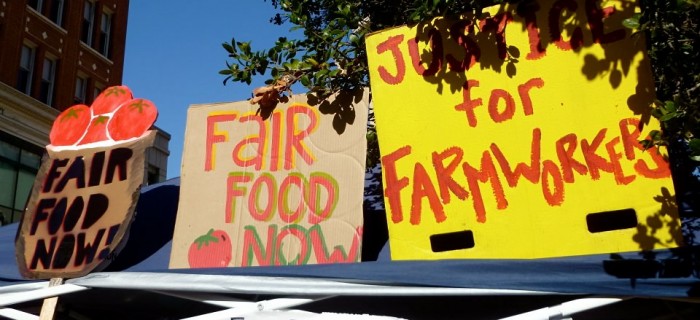Occupy the Food System: Building a vision of transformation
Food First Backgrounder, Fall 2011, Vol. 17, No. 3
A dynamic global food movement is rising up around the world. Food justice activists are taking back their food systems through urban gardening, organic farming, community-supported agriculture, farmers’ markets, and locally-owned processing and retail operations. Food sovereignty advocates organize for land reform, the end of destructive global-trade agreements and support for family farmers, women, and peasants. Protests against—and viable alternatives to—the expansion of genetically modified organisms (GMOs), agrofuels, land grabs, and the oligopolistic control of our food are growing everywhere every day, denouncing and replacing the dysfunctional corporate food regime with visions of hope, equity, and sustainability.
The social and political convergence of the “practitioners” and “advocates” in these food movements is well underway, as evidenced by the growing trend in food policy councils; the coalitions for food sovereignty spreading across the US, Latin America, Africa, Asia, and Europe; and the practical and political solutions to the food crisis that appear increasingly in academic literature and the popular media.
The food movement is widespread, highly diverse, refreshingly creative and—much like the “Occupy Wall Street” protests—busy forging a broad-based vision for transformation.
The global food movement springs from strong commitments to food justice, food democracy, and food sovereignty on the part of thousands of farmers’ unions, consumer groups, nonprofits, and faith-based and community organizations across the urban-rural and North-South divides of our planet. This remarkable “movement of movements” is widespread, highly diverse, refreshingly creative and— much like the “Occupy Wall Street” protests—busy forging a broad-based vision for transformation.
Many publications point to the hopeful initiatives in growing, processing, distributing, and consuming. And many analyses are now identifying the structural barriers to a fair and sustainable food system. However, there has been little strategic reflection on just how to get from where we are—a broad but politically fragmented collection of hopeful alternatives—to where we need and want to be: the new norm. The food movement faces the perennial political question: What is to be done?


 Help Food First to continue growing an informed, transformative, and flourishing food movement.
Help Food First to continue growing an informed, transformative, and flourishing food movement.




